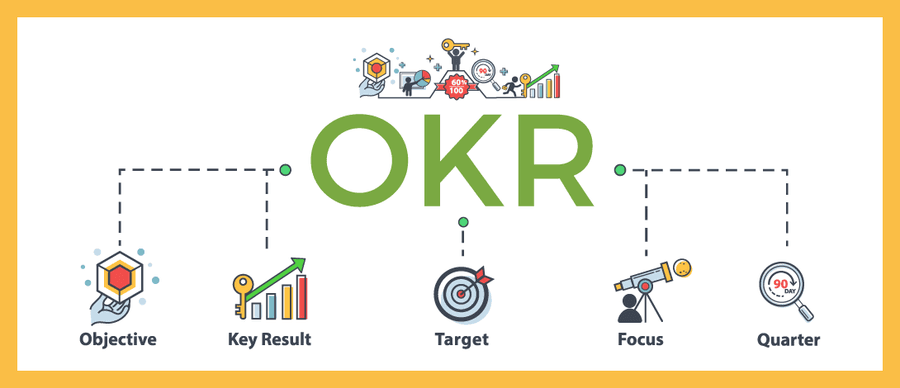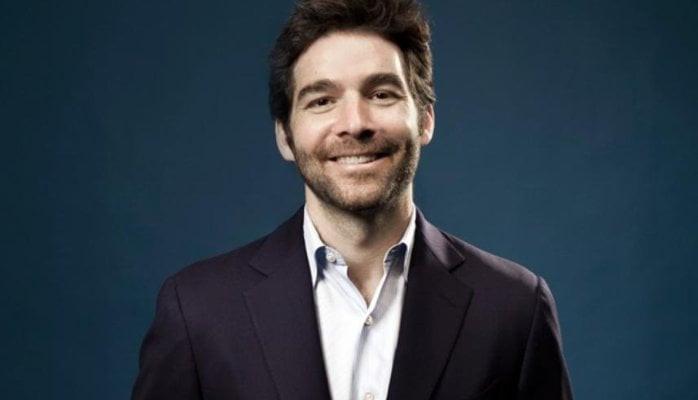Eric Bright's Key Ideas from Measure What Matters
by John Doerr
Ideas, facts & insights covering these topics:
12 ideas
·2.36K reads
9
Explore the World's Best Ideas
Join today and uncover 100+ curated journeys from 50+ topics. Unlock access to our mobile app with extensive features.
Focus on Execution
Good ideas without proper execution are useless. To see ideas come to life and drive value for your organization, you need a systematic approach to prioritizing and executing the best ideas.
Objectives and Key Results (OKRs) is a powerful goal-setting framework for organizations. This system has been used by countless successful companies to direct efforts and grow over the long term.
42
364 reads
The Meaning Of Objectives and Key Results (OKRs)
It is a management methodology that helps to ensure that the company focuses efforts on the same important issues throughout the organization. This goal-setting framework is used by Google, Airbnb, LinkedIn, and many other successful companies.
Objective: a short, inspirational, and achievable statement that describes WHAT you want to achieve. Objectives are a “vaccine against fuzzy thinking and fuzzy execution.”
Key Results: succinct, specific, and measurable actions that map out HOW you will achieve your Objectives. KRs are aggressive but realistic.
43
251 reads
Goal Setting
OKRs surface your primary goals. They channel efforts and coordination. They link diverse operations, lending purpose and unity to the entire organization.
OKRs help your organization prioritize the highest impact initiatives. They also align people across your entire organization, which creates unity despite people working on very different parts of the business.
36
215 reads
The Danger Of Goals
Goals may cause systematic problems in organizations due to narrowed focus, unethical behaviour, increased risk-taking, decreased cooperation and decreased motivation.
The wrong goals can be detrimental to an organization. The OKR process helps you set the right goals, but it must be used carefully. Sending people in the wrong direction or incentivizing the wrong behaviour through goals can be wildly harmful to an organization.
36
158 reads
A Shared Language for Execution
OKRs are a shared language for execution. They clarify expectations: What do we need to get done (and fast), and who’s working on it? They keep employees aligned, vertically and horizontally.
OKRs unify the organization with a shared language and clarity about expectations.
36
162 reads
Communicating the 'Why'
Leaders must get across the why as well as the what. Their people need more than milestones for motivation. They are thirsting for meaning, to understand how their goals relate to the mission. And the process can’t stop with unveiling top-line OKRs at a quarterly all-hands meeting.
People want to find meaning in their work. They want to know how their hours contribute directly to the mission of the organization. It’s the responsibility of the leader to explain why certain goals have been set, and how individuals working on their goals are contributing to the overall vision.
39
130 reads
Involve Your People in Setting OKRs
People who choose their destination will own a deeper awareness of what it takes to get there.
Giving people a chance to contribute to setting OKRs within their functions can help increase buy-in, give a sense of ownership, and help them understand what it takes to achieve the goals. Leaders need to find the right balance between bottom-up and top-down goal-setting when using OKRs.
38
131 reads
How to Stop Being Embarrassed
A manager’s first role is the personal one. It’s the relationship with people, the development of mutual confidence, and the creation of a community.
Not everything that can be counted counts, and not everything that counts can be counted.
Outside of setting the right goals and getting buy-in from their teams, managers need to focus on relationships. They need to make sure their people are developing and happy with their path.
38
136 reads
Conversations, Feedback, and Recognition (CFRs)
OKRs need to include a healthy and continuous performance management system. This can be done with the CFR framework.
Conversations: an authentic, richly textured exchange between manager and contributor, aimed at driving performance.
Feedback: bidirectional or networked communication among peers to evaluate progress and guide future improvement.
Recognition: expressions of appreciation to deserving individuals for contributions of all
CFRs help promote transparency, accountability, empowerment, and teamwork.
39
133 reads
Feedback
Feedback helps people understand how others perceive them and their work. It’s naturally opinion-based but is often grounded in the experiences we have with colleagues.
Managers need to learn how to give constructive feedback to their employees in a way that they can absorb and action that feedback.
37
137 reads
IDEAS CURATED BY
CURATOR'S NOTE
A primer on OKRs.
“
Eric Bright's ideas are part of this journey:
Learn more about business with this collection
Effective communication
Persuasion techniques
Closing a sale
Related collections
Different Perspectives Curated by Others from Measure What Matters
Curious about different takes? Check out our book page to explore multiple unique summaries written by Deepstash curators:
19 ideas
Discover Key Ideas from Books on Similar Topics
2 ideas
Don't Set Resolutions. Set Personal OKRs.
blog.usejournal.com
5 ideas
Joy, Inc
Richard Sheridan
22 ideas
Trillion Dollar Coach
Eric Schmidt, Jonathan Rosenberg, Alan Eagle
Read & Learn
20x Faster
without
deepstash
with
deepstash
with
deepstash
Personalized microlearning
—
100+ Learning Journeys
—
Access to 200,000+ ideas
—
Access to the mobile app
—
Unlimited idea saving
—
—
Unlimited history
—
—
Unlimited listening to ideas
—
—
Downloading & offline access
—
—
Supercharge your mind with one idea per day
Enter your email and spend 1 minute every day to learn something new.
I agree to receive email updates











